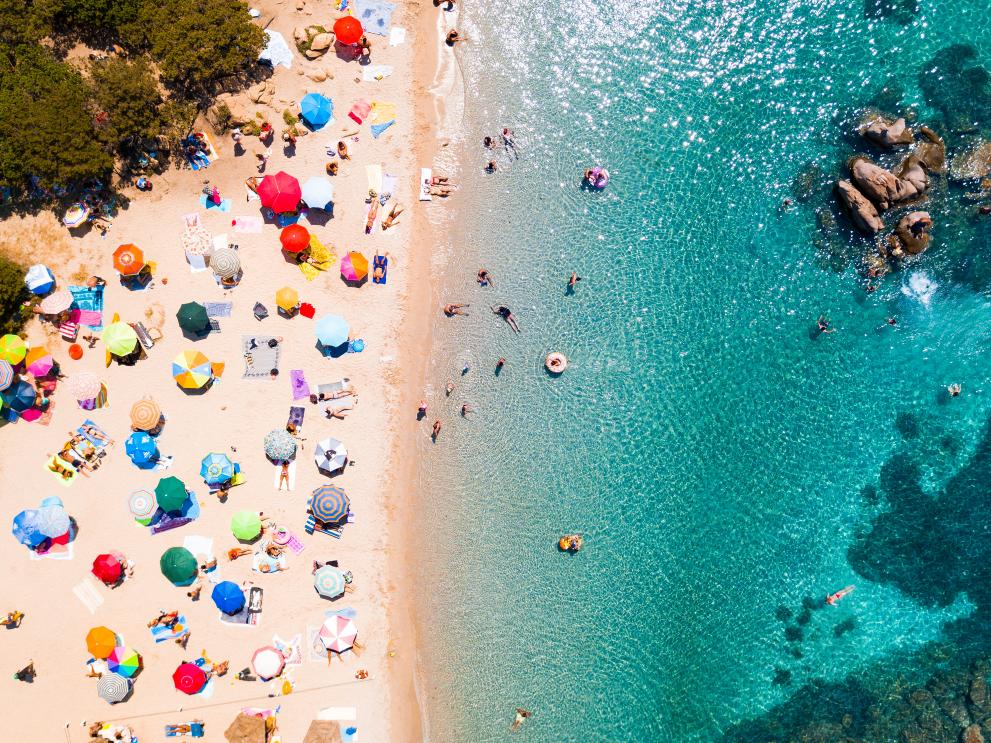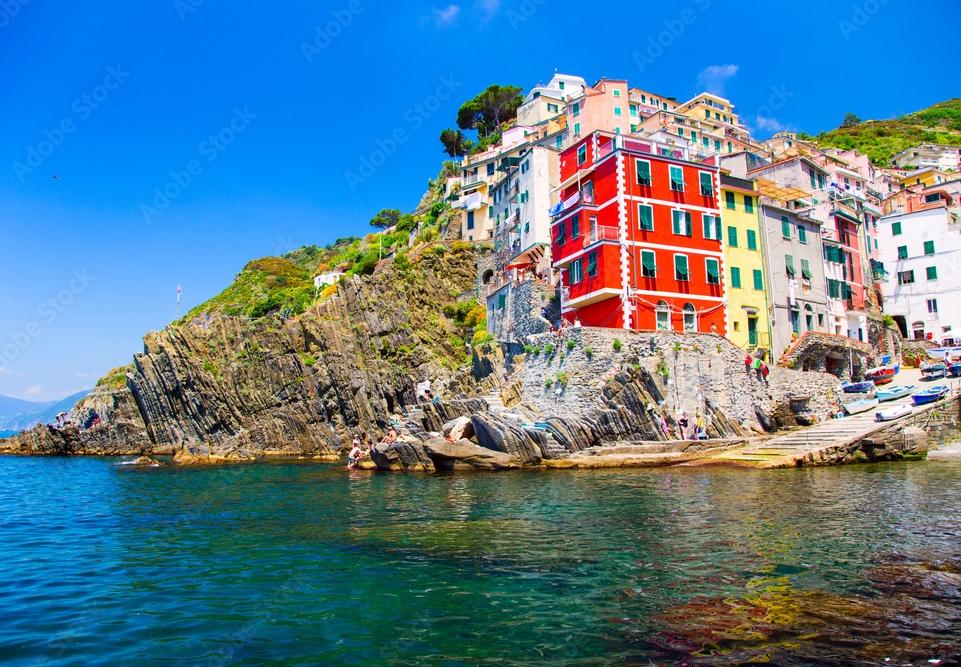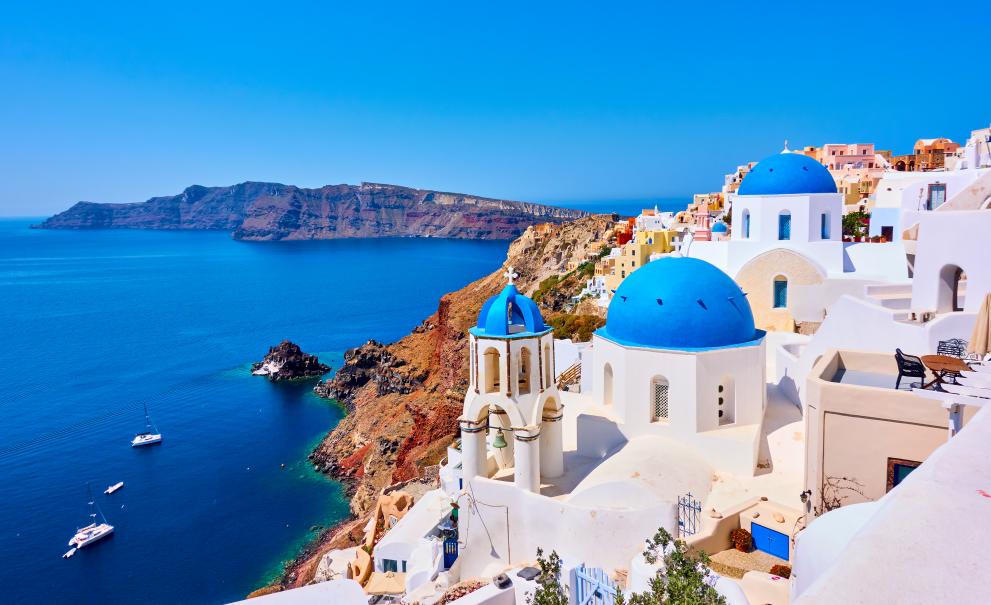
EU coastal areas are amongst the most preferred touristic destinations for European and international travellers, making coastal and maritime tourism the biggest, growing sector of the EU Blue Economy in terms of GVA and employment. Coastal tourism comprises recreational activities taking place in the proximity of the sea (such as swimming, sunbathing, coastal walks, and wildlife watching) as well as those taking place in the maritime area, including nautical sports (e.g. sailing, scuba diving, cruising, etc.).
Over half of the EU bed capacity is concentrated in regions with a sea border. For the economy of many non-landlocked EU Member States, tourism generates a significant portion of the national revenue. It has a wide-ranging impact on economic growth, employment and social development. Tourism is particularly significant for Southern European countries, such as Spain, Portugal, Italy, Malta and Greece. At the same time, coastal tourism is characterised by high seasonality, with demand concentrated in a limited number of months, usually July and August.
In 2020, Coastal tourism kept generating the largest share of employment and GVA in the EU Blue Economy, with 51% and 26%, respectively.

The statistics presented in this section originate from the following expenditures by tourists in EU coastal areas:
• Accommodation
• Transport
• Other expenditures (e.g. food, culture, recreational activities, water-sport equipment and clothing).
The sector was hit hard by the COVID-19 pandemic. Because of the COVID-19 pandemic, millions of European citizens suddenly could not travel.
In March 2020, tourism came to a grinding halt, and its turnover did not fully recover until 2022 when the total number of nights spent in EU tourist accommodation reached 2.73 billion (against the pre-pandemic level of 2.88 billion nights in 2019).

In 2022, tourism figures in all months were higher than in 2021, with the fourth quarter of 2022 recording 472 million nights. In total, nights spent went up by 49% compared to 2021 (1.83 billion nights).
In 2020, the GVA generated by the sector amounted to €33.9 billion, down from €81.5 billion registered in 2019, i.e., a year-on-year 58% contraction.
Gross profits, at €3.9 billion, shrunk by more than 85% in 2019.
While recovering from the Covid-19 pandemic, the Coastal tourism sector has engaged in the sustainability transition with the aim to green its operations, reduce its negative impacts on the marine environment, and strengthen its resilience to exogenous shocks such as commodity and fuel price inflation.
For this purpose, the European Commission has published the Tourism Transition Pathway involving all tourism stakeholders. The updated Industrial
Strategy (2021) calls for the acceleration of green and digital transformation to increase the European economy's resilience.
The strategy also identifies 27 initiative areas for the green and digital transition to improve tourism in the EU. These include:
• Regulation and public governance, which includes; improving statistics and indicators for tourism and comprehensive tourism strategies.
• Green and digital transition, which includes; research and innovation projects on circular and climate-friendly tourism and support for digitalisation of tourism SMEs and destinations.
• Resilience, which includes; seamless cross-border travelling, fostering skills in tourism, promoting fairness and equality in tourism jobs, and accessibility.
As part of the EU Sustainable Blue Economy, the coastal and maritime tourism sector has been identified as an area with potential to foster a smart,
sustainable and inclusive Europe. The EU's tourism policy aims to keep Europe's position as a leading tourist destination while also maximising the industry's contribution to economic growth and jobs.
While European destinations are welcoming tourists at pre-pandemic levels, the rise in tourist numbers and their concentration in attractive touristic destinations may generate issues of over tourism, particularly in coastal areas and small island. Increasing tourism intensity requires long-term solutions .
At the same time, Covid-19 will likely have long-term impacts on EU citizens’ travelling behavior. A recent Eurobarometer survey showed that 82% of EU citizens are ready to change their travel and tourism habits to be more sustainable, for example, by consuming local products (55%), choosing ecological means of transport (36%) or by paying more to protect the natural environment (35%) or to benefit the local community (33%). The survey also found out that 38% of European respondents are expecting more domestic travelling in the future .
One example of a sustainable approach to coastal and maritime tourism is the ECO-CRUISING FU_TOUR.
For many experts in the business, this is a game-changing opportunity that will lead to greater and faster adoption of more sustainable environmental solutions and greater respect for coastal natural and cultural qualities of coastal areas. The European Green Deal and the new EU Sustainable Blue Economy can help in such green
transitions, thanks to policy reforms, specific financial mechanism, as well as innovation, digitalisation, education and training.

![[Bathing boxes on the beach]](/sites/default/files/styles/embed_large/public/2022-04/AdobeStock_5838556.jpeg?itok=OihAUMSO)